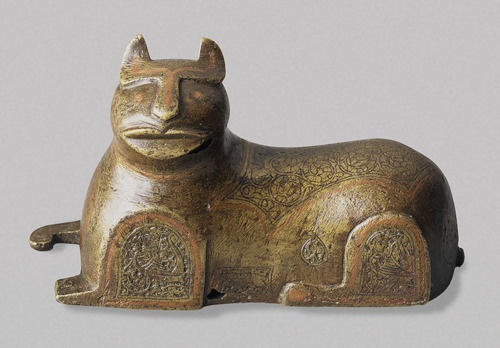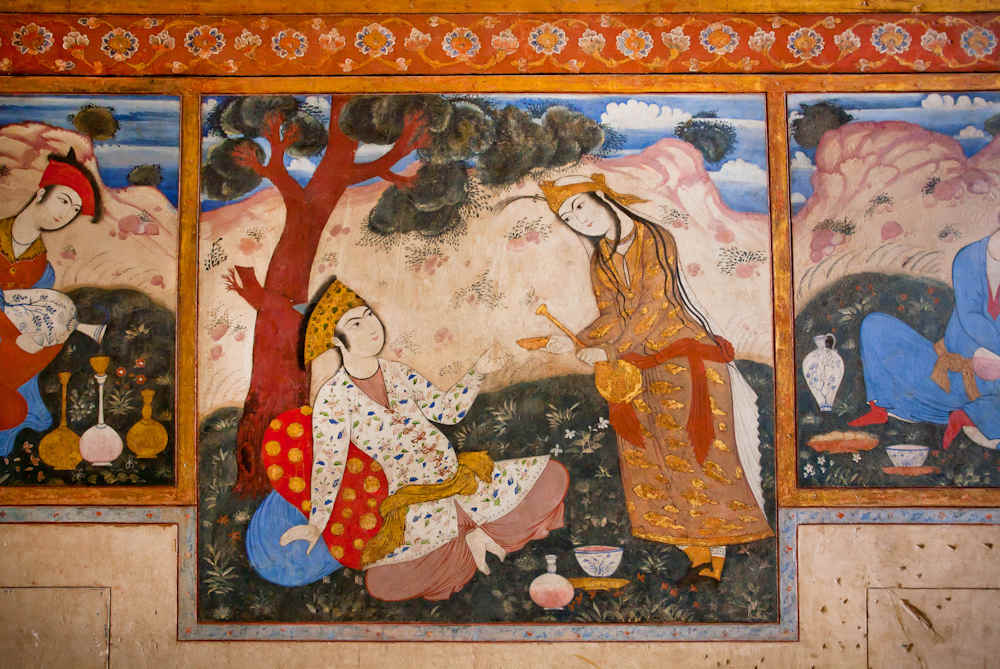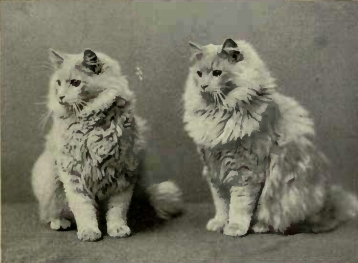Have you ever wondered about the history of Persian cats? These fluffy and majestic felines have a captivating past that dates back centuries. In this article, we’ll delve into the fascinating history of Persian cats, exploring their origins, their journey to becoming one of the most popular breeds, and the unique traits that set them apart from other cats. So, whether you’re a cat lover or just curious about these beautiful creatures, get ready to learn more about the captivating history of Persian cats.
Persian cats have a rich history that can be traced back to ancient times. They are believed to have originated in Persia, which is modern-day Iran. These elegant cats were highly regarded by Persian royalty and were often kept as cherished companions. Over the years, Persian cats spread across the globe, captivating people with their striking appearance and calm demeanor. Today, they are one of the most popular cat breeds worldwide, known for their luxurious coats, distinctive flat faces, and gentle personalities. In the upcoming articles, we’ll explore the different aspects of Persian cats, including their grooming needs, health concerns, and tips for providing them with the best care possible. Stay tuned for more captivating content about these wonderful felines!
The History of Persian Cats

Ancient Origins
Persian cats have a rich and ancient history that dates back to the time of the ancient Persian Empire, which existed from roughly 550 BCE to 330 BCE. These beloved feline companions were highly valued by Persian nobility and royalty, who considered them symbols of luxury and prestige.
Early Development of the Persian Cat Breed
The exact origins of the Persian cat breed are shrouded in mystery, but many experts believe that they originated in the mountainous regions of Persia, which is modern-day Iran. It is believed that these cats were first bred for their luxurious coats and distinct facial features.

Historical Significance of Persian Cats
Throughout history, Persian cats have played a significant role in various cultures around the world. They were highly revered in ancient Persia and were even mentioned in ancient Persian literature and artwork. These cats were often associated with royalty and were considered sacred in many religious traditions.
Physical Characteristics of Persian Cats
Distinctive Facial Features
One of the most distinguishing features of Persian cats is their unique facial structure. They have a flat face with a short nose, large round eyes, and a prominent forehead. This distinctive facial structure gives Persian cats their signature look and sets them apart from other cat breeds.
Variations in Coat Colors and Patterns
Persian cats are known for their long, thick, and luxurious coats, which come in a wide variety of colors and patterns. These cats can have solid coats in colors such as white, black, cream, and various shades of brown. They are also known for their beautiful calico, tortoiseshell, and tabby patterns.
Body Structure and Size of Persian Cats
Persian cats have a sturdy and muscular body structure. They have a medium-sized body with a broad chest and short legs. These cats are typically larger than most domestic cat breeds, with adult males weighing between 7-12 pounds and adult females weighing between 6-10 pounds.

Persian Cat Behavior and Temperament
Gentle and Calm Personality Traits
Persian cats are known for their gentle and calm temperament. They are generally quiet and reserved, preferring a peaceful and relaxed environment. These cats enjoy a routine and are not particularly fond of change. They make excellent indoor pets and are well-suited for apartment living.
Interaction with Humans and Other Pets
Persian cats are known for their affectionate nature and their strong bonds with their human companions. They are often described as lap cats who enjoy cuddling and being petted. They are generally good with children and other pets, although they can be shy or aloof around strangers.
Common Behavioral Issues and Solutions
Like any other cat breed, Persian cats can occasionally exhibit certain behavioral issues. These may include excessive grooming, aggression, or litter box problems. It is important to address these issues promptly and seek professional advice if necessary. Providing a stimulating environment, regular playtime, and positive reinforcement can help prevent and alleviate behavioral problems.
Famous Persian Cats in History
Notable Persian Cat Owners and Lovers
Throughout history, many notable individuals have owned and loved Persian cats. One such individual was Queen Victoria of England, who adored her Persian cat named White Heather. Other famous Persian cat owners include Florence Nightingale, Marilyn Monroe, and Ernest Hemingway.
Persian Cats in Art and Literature
Persian cats have been immortalized in various forms of art and literature. They have been depicted in paintings, sculptures, and even in ancient Egyptian hieroglyphs. In literature, they have appeared in several famous works, such as “The Cheshire Cat” in Lewis Carroll’s “Alice’s Adventures in Wonderland.”
Historical Events Influenced by Persian Cats
Persian cats have had a significant impact on history. For example, during the reign of King Xerxes of Persia, Persian cats were believed to have saved the Persian army from an ambush. These cats, known for their keen senses, alerted the soldiers to the approaching enemy, allowing them to prepare for battle.

Breeding and Show Standards of Persian Cats
Selective Breeding Practices
The breeding of Persian cats requires careful selection and planning to maintain the breed’s distinct features and characteristics. Breeders focus on preserving the breed’s unique coat, body structure, and facial features through selective breeding practices. These practices help ensure that the breed remains true to its origins.
Persian Cat Breed Standards
Persian cats are recognized by various cat organizations worldwide, such as The Cat Fanciers’ Association (CFA) and The International Cat Association (TICA). These organizations have established breed standards that outline the ideal characteristics and features of Persian cats, including coat color, eye color, and body structure.
The Role of Cat Shows in Preserving the Breed
Cat shows play a vital role in preserving and promoting the Persian cat breed. These events allow breeders, owners, and enthusiasts to showcase their cats and compete for awards and titles. Cat shows also provide an opportunity for breeders to exchange knowledge and share their passion for the breed.
Healthcare and Grooming Tips for Persian Cats
Common Health Issues in Persian Cats
Persian cats are prone to certain health issues, mainly due to their unique physical characteristics. Common health problems include respiratory issues, eye problems, dental diseases, and polycystic kidney disease (PKD). Regular veterinary check-ups, proper diet, and grooming can help prevent and manage these health issues.
Regular Veterinary Care and Vaccinations
Routine veterinary care is essential for the overall health and well-being of Persian cats. Regular check-ups, vaccinations, and preventive care can help detect and address any potential health concerns. It is important to establish a good relationship with a trusted veterinarian who specializes in feline care.
Proper Grooming Techniques for Persian Cats
Grooming is an essential part of caring for Persian cats due to their long, dense coats. Regular brushing helps prevent matting and keeps the coat healthy and shiny. Persian cats also require regular eye and ear cleaning, nail trimming, and dental care. It is important to start grooming them from a young age to get them accustomed to the process.

Nutritional Needs and Diet Recommendations
Balanced Diet Requirements for Persian Cats
Persian cats have specific nutritional needs that should be met through a balanced diet. They require a high-quality cat food that is rich in protein and contains essential nutrients, such as omega-3 fatty acids and taurine. It is important to feed them an appropriate portion size and provide fresh water at all times.
Best Food Options for Persian Cats
There are various commercial cat food brands available that cater specifically to the nutritional needs of Persian cats. Wet food, dry food, or a combination of both can be suitable options, depending on the cat’s preferences and health requirements. It is advisable to consult with a veterinarian to determine the best diet for your Persian cat.
Avoiding Common Dietary Problems
Some Persian cats may be prone to dietary problems, such as obesity or digestive issues. It is important to monitor their weight and adjust their diet accordingly. Feeding them a balanced diet, providing regular exercise, and avoiding excessive treats can help prevent these common dietary problems.
Training and Enrichment for Persian Cats
Basic Training Commands and Techniques
While Persian cats are not typically known for their trainability like dogs, they can still learn basic commands and behaviors through positive reinforcement training techniques. Teaching them commands such as “sit,” “stay,” and “come” can help ensure their safety and enhance their bond with their human companions.
Cat Toys and Activities for Mental Stimulation
Providing Persian cats with appropriate toys and activities is essential for their mental stimulation and overall well-being. Toys that encourage hunting and play, such as interactive puzzle toys or feather wands, can help keep them entertained and mentally engaged. Access to scratching posts and perches also allows them to exercise and satisfy their natural instincts.
Creating a Safe and Stimulating Environment
Creating a safe and stimulating environment is crucial for the happiness and well-being of Persian cats. This includes providing them with comfortable resting areas, safe toys, and vertical spaces to climb and explore. Ensuring a peaceful and calm environment with minimal disruptions or loud noises is also important for their sensitive nature.
Persian Cat Breeds and Varieties
Traditional Persian Cats
Traditional Persian cats refer to the original type of Persian cats with a longer nose and less extreme facial features. These cats have a more natural appearance and are sometimes referred to as Doll-Face Persians. They have the same luxurious coat and gentle temperament as their modern counterparts.
Exotic Shorthair Persian Cats
The Exotic Shorthair is a breed closely related to the Persian cat. These cats have the same distinct facial features and gentle temperament of Persian cats but with a short, dense coat. They are a popular choice for those who prefer the Persian look but with lower grooming needs.
Persian Cat Mixes and Hybrids
Persian cats are sometimes crossed with other breeds to create unique hybrid cats. One such example is the Himalayan cat, which is a cross between a Persian and a Siamese. These mixes often combine the best traits of both breeds and create distinctive and beautiful cats.
Caring for Persian Cats: Tips and Advice
Creating a Comfortable Living Space
Persian cats thrive in a comfortable and secure living space. Providing them with a quiet and calm environment, away from loud noises and excessive activity, is crucial for their well-being. Ensuring they have access to comfortable bedding, scratching posts, and hiding spots will help them feel secure and content.
Litter Box Training and Maintenance
Litter box training is an important aspect of caring for Persian cats. Providing a clean and well-maintained litter box in a quiet and accessible location is essential. It is advisable to use unscented, clumping litter and to clean the litter box regularly to prevent any potential litter box issues.
Establishing a Routine for Persian Cats
Persian cats thrive on routine and predictability. Establishing a daily routine for feeding, playtime, and grooming can help them feel secure and reduce any stress or anxiety. Maintaining a consistent schedule for their care helps promote their overall well-being and happiness.
Understanding Persian Cat Communication
Vocalizations and Body Language
Persian cats communicate through a combination of vocalizations, body language, and facial expressions. They may use purring, meowing, trilling, or chirping to express their needs or emotions. Understanding their different vocalizations and observing their body language can help decipher their messages and respond accordingly.
Interpreting Feline Expressions
Persian cats have expressive faces that can provide valuable insights into their emotions and moods. Observing their eyes, ears, tail, and overall posture can help interpret their expressions. A relaxed and content cat will have soft eyes, an upright tail, and ears facing forward, while signs of stress or fear may include dilated pupils, a lowered tail, and flattened ears.
Responding to Persian Cat Cues
Understanding and responding to Persian cat cues is important for their well-being. If a Persian cat seeks attention, it is best to reciprocate their affection. However, if they show signs of wanting space or being uncomfortable, it is important to respect their boundaries and give them the solitude they need.
Persian Cat Rescue and Adoption
Finding Reputable Persian Cat Rescues
If you are interested in adopting a Persian cat, it is important to find reputable Persian cat rescues or shelters. These organizations specialize in rescuing and rehoming Persian cats in need. Researching and contacting local rescue groups or checking online resources can help you find a reliable rescue or adoption center.
The Process of Adopting a Persian Cat
The process of adopting a Persian cat typically involves filling out an application, undergoing an interview, and paying an adoption fee. The rescue or adoption center will ensure that the cat is a suitable match for your home and lifestyle. They may also require a home visit or reference checks to ensure the cat’s well-being.
Supporting Persian Cat Welfare Organizations
Supporting Persian cat welfare organizations is a wonderful way to contribute to the well-being and protection of these beloved cats. Donations, volunteering at shelters or rescues, or participating in fundraising events are just a few ways to help make a difference in the lives of Persian cats in need.
Myths and Misconceptions about Persian Cats
Dispelling Stereotypes and Misunderstandings
Persian cats have often been subject to various misconceptions and stereotypes. One common misconception is that they are high-maintenance due to their grooming needs. While grooming is necessary, it can be easily managed with regular brushing and care. It is important to educate others and dispel these misconceptions to promote the understanding and appreciation of Persian cats.
Addressing Health and Genetic Concerns
There have been concerns about certain health issues and genetic predispositions in Persian cats, such as respiratory problems and polycystic kidney disease (PKD). Responsible breeding practices, regular vet check-ups, and genetic testing can help mitigate these concerns. It is essential to seek out reputable breeders who prioritize the health and well-being of their cats.
Separating Fact from Fiction
Separating fact from fiction is essential when it comes to Persian cats. While they are known for their luxurious coats, gentle temperament, and distinct features, it is important to understand that each Persian cat is an individual with unique traits and personality. It is advisable to meet and interact with Persian cats firsthand to form your own opinion and understanding of the breed.
Conclusion
Persian cats have captivated the hearts of cat lovers for centuries with their regal appearance, gentle nature, and unmistakable charm. Their rich and ancient history, unique physical characteristics, and significant cultural influence make them truly remarkable companions. Understanding their needs, providing proper care and attention, and appreciating their individuality are key to building a strong and fulfilling bond with these beautiful feline friends.
Frequently Asked Questions about Persian Cats
-
What is the origin of Persian cats?
- Persian cats originated in the mountainous regions of Persia, which is modern-day Iran.
-
What are the distinctive features of Persian cats?
- Persian cats have a flat face, short nose, large round eyes, and a prominent forehead.
-
Are Persian cats good with children?
- Persian cats are generally good with children, but supervision and proper introductions are always recommended.
-
What are some common health issues in Persian cats?
- Persian cats may be prone to respiratory problems, eye issues, dental diseases, and polycystic kidney disease (PKD).
-
How often should Persian cats be groomed?
- Persian cats require regular grooming, which includes daily brushing to prevent matting and the occasional bath.
-
Are Persian cats suitable for apartment living?
- Yes, Persian cats are well-suited for apartment living as they are generally calm, indoor cats.
-
Do Persian cats have specific dietary requirements?
- Persian cats require a balanced diet that is rich in protein and essential nutrients. Consult with a veterinarian for specific dietary recommendations.
-
Can Persian cats be trained?
- While not as easily trainable as dogs, Persian cats can still learn basic commands and behaviors through positive reinforcement training techniques.
-
How do Persian cats communicate?
- Persian cats communicate through vocalizations, body language, and facial expressions.
-
How can I find a Persian cat to adopt?
- Research reputable Persian cat rescues or shelters, and consider adopting from them to provide a loving home for a cat in need.